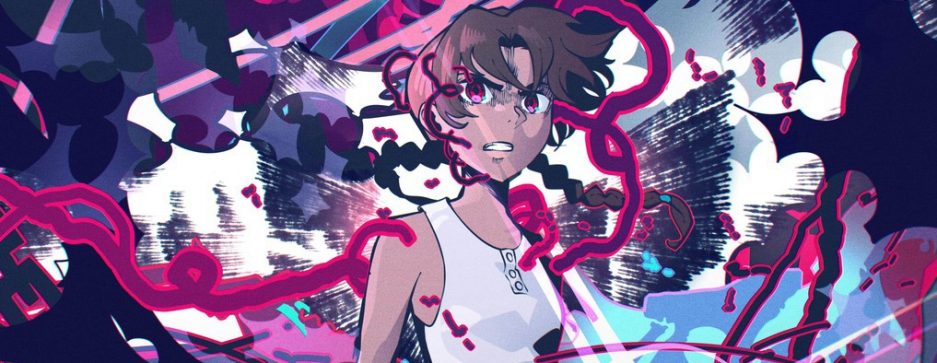The sixth season of My Hero Academia‘s anime adaptation was a Herculean effort; adapting some of the manga’s most demanding content, and succeeding with flying colors. It’s a rebound from the less-than-ideal circumstances of the prior season so stunning that it makes for an understandably tough act for Season 7 to follow. Now that we’re currently over 10 episodes deep into Heroaca’s current season, it’s time we check in and see for ourselves how things have been going.
Main Staff
Chief Direction: Kenji Nagasaki
Series Direction: Naomi Nakayama
Assistant Direction: Hyuga Yamamura
Series Composition/Script: Yosuke Kuroda
Character Design: Yoshihiko Umakoshi, Hitomi Odashima
by Ary
This season has been off to a pretty interesting start. While recap episodes are by no means unusual for My Hero Academia, this is the first time a season has started with four episodes dedicated to recapping the whole TV series. These recaps have been a fun way to look back on the TV series’ eight-year-long run while showcasing what its future looks like. It’s interesting to note that all four episodes have been directed by Hyuga Yamamura: a former production assistant turned director who followed Naomi Nakayama onto the production as her assistant. As these episodes are airing in the same time slot and cour as the regular season, it also means the season is shorter than usual, spanning 21 episodes as opposed to the 25 episodes we have gotten in previous years.

The seventh season of My Hero Academia comes with more surprises than just the recap episodes: the biggest being a change in the series director to Naomi Nakayama, who joined the production after Masahiro Mukai stepped down from this role, having directed the previous three seasons. While we don’t know why he did so, or why Naomi Nakayama was chosen as his replacement, we can look back on her previous work and what she has brought to the series thus far. Nakayama’s career has been filled with quite a few interesting projects, having worked under legendary directors such as Shigeyasu Yamauchi on Casshern Sins and Hiroshi Hamasaki on Orange. Both are creators with big legacies and very distinct visual styles. This history gives us an idea of where her directorial influences lie, and while the show’s visual identity is still largely the same as it has always been, it might still be rewarding to keep that in mind when following Heroaca S7.
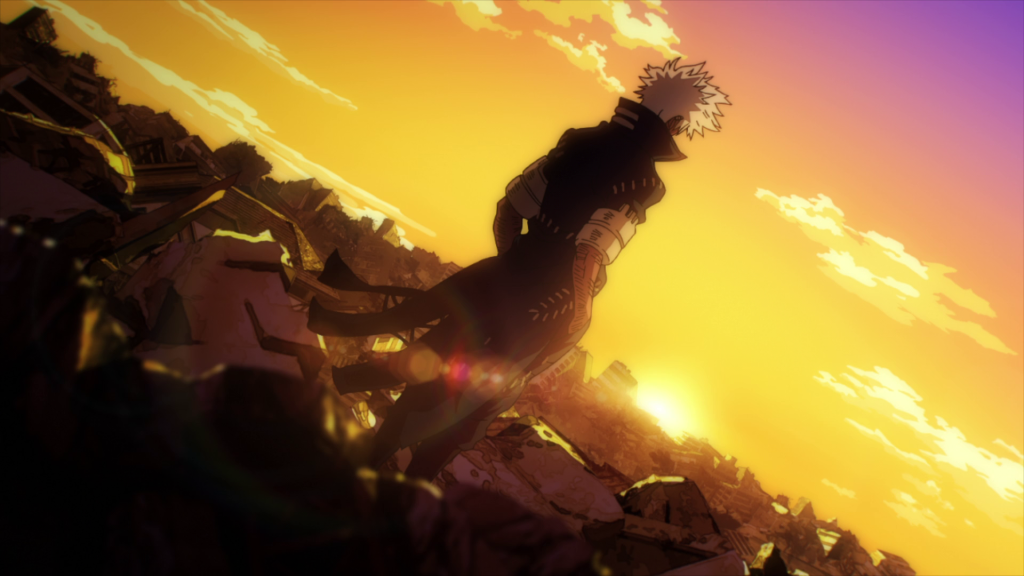
Now you might wonder where Kenji Nagasaki falls into all this, as he is still formally credited as the Chief Director for My Hero Academia: a role he has held since Masahiro Mukai first took over in Season 4. We know from past interviews that the main reason for this change was to more easily divide the workload of both a movie production and a TV anime, as Nagasaki was alone responsible for directing both Heroaca S3 and the movie: Two Heroes. This was clearly not sustainable in the long run, hence why Masahiro Mukai was invited to direct Season 4 by producer Yoshihiro Oyabu, while Kenji Nagasaki focused on the next movie: Heroes Rising. This also resulted in two separate teams being established: one for the TV anime, and one for the movie productions. As a result, Nagasaki took a more hands-off approach, usually involving himself in the final checks and script meetings, but with the main creative control being in Mukai’s hands. Between his continued credit as chief director, and his credit as animation advisor on the newest movie, we can gather that his role in the Nakayama era continues to be the same as it was under Mukai.
Opening 12
Storyboard/Direction: Yoshifumi Sasahara
Animation Direction: Yoshihiko Umakoshi
Key Animation: Fumika Arakaki, Ami Nagata, Takahiro Komori, Tomoki Tanaka, Masayuki Kojima, Shuhei Nishitani, Shun Shibata, Yumi Sudarehata, Manabu Nii, Arisa Ozaki, Takeshi Morita, Yuuko Dangi, Yusuke Soen, Nami Fujii, Satoshi Hattori, Kyoko Yufu, Jason Yao, Akira Iwamoto, Kenta Yokoya
by Bababooey
If there was one aspect of Season 6 that set a new high watermark for Heroaca, it would definitely be the openings and endings. After two back-to-back openings showcasing the most drastic departures from the anime’s aesthetic of any of their predecessors (save for maybe OP7), as well as packing absurd animation muscle in comparison to the barebones animator lineups of Season 5, calling the two a tough act to follow is arguably an understatement. While this season’s first opening didn’t quite reach those highs, it certainly wasn’t a complete letdown. It’s a mood piece diverging from the series’s look as the previous two did, with a distinct flavor of its own that’s worth a dissection.
Announcing his involvement on Twitter hours before the opening’s inaugural broadcast, the directorial duties fell upon the hands of Yoshifumi Sasahara: a name that likely nobody was expecting. His ties to BONES are tenuous at most – limited to directing the two outsourced episodes of Heroaca’s first season subcontracted to Nomad, and two episodes of The Case Study of Vanitas’s first cour – making him an effective outsider to the studio. So then, how exactly did he end up directing a Heroaca OP? Sasahara was introduced to series director Nakayama through animator Cindy Yamauchi: a friend of Nakayama’s who had worked alongside Sasahara on many a work helmed by Tomohisa Taguchi – most significantly 2020’s Akudama Drive at Pierrot, of which Sasahara was assistant series director and Yamauchi the character designer. This connection led to him taking the helm for the opening – his first ever time directing one.
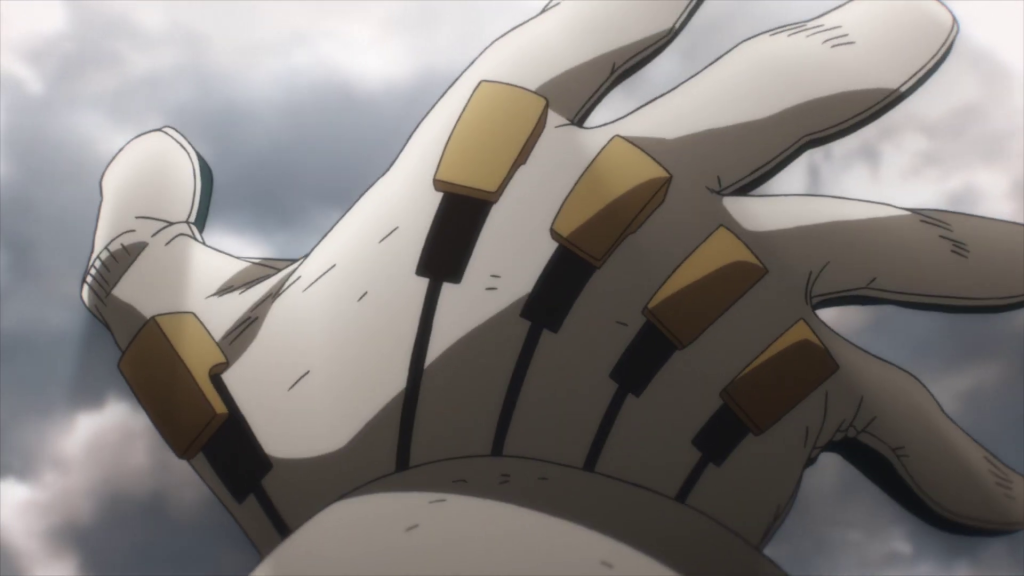

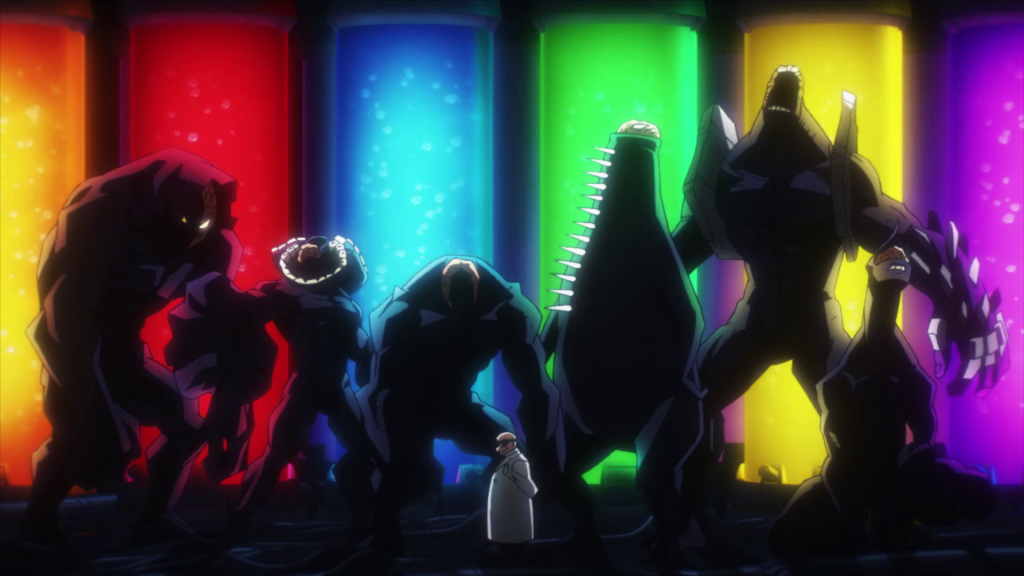

Within the first seconds of the opening, Sasahara sets the tone with a strong use of light and color. Deku stands in the middle of the ruins of a city depicted in a fittingly grim, muted palette, reaching his hand up to the sky as the sun is covered in dark clouds (likely Fumika Arakaki’s animation), the moody scene intercut with a few nearly split-second shots of practically every major and minor player on the heroes’ side in the final arc, each shot illuminated to striking effect. Sasahara’s dramatic lighting is not limited to just the intro, being a running motif throughout much of the opening’s first half. Light and shadows are constantly moving: advancing and receding over the characters (which is also an impressive feat from an animation standpoint – animating moving shadows like that by hand is no easy task), each shot lit in different colors allowing them to stand out from one another. The single-point lighting makes good use of the skills of BONES’ in-house composite department: something the anime proper tends not to to harness as well as its contemporaries within the studio: both it and the eye-catching color design are not only remarkably synergistic with each other, they also even manage to mask over Heroaca’s generally ill-received background art direction.
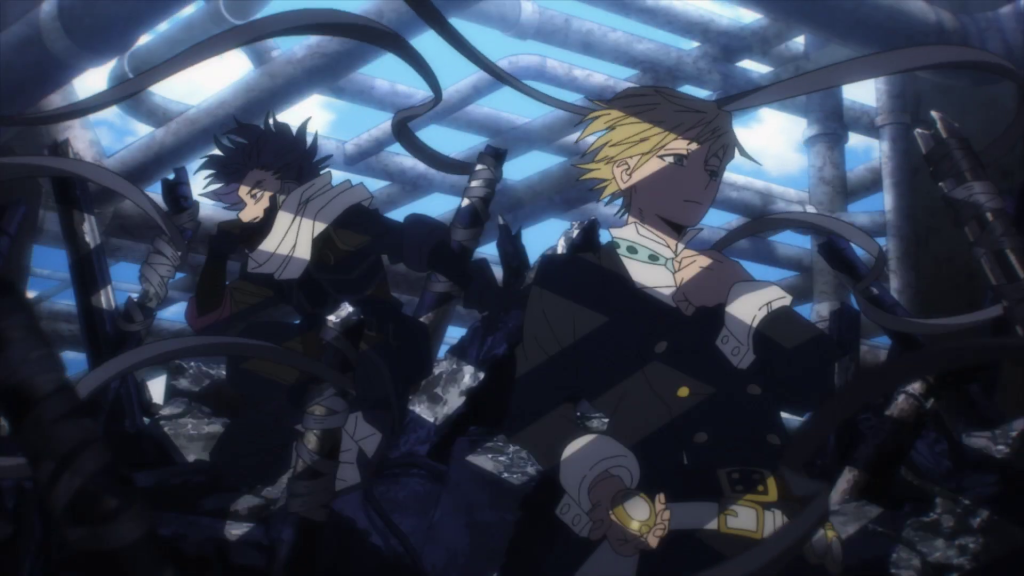

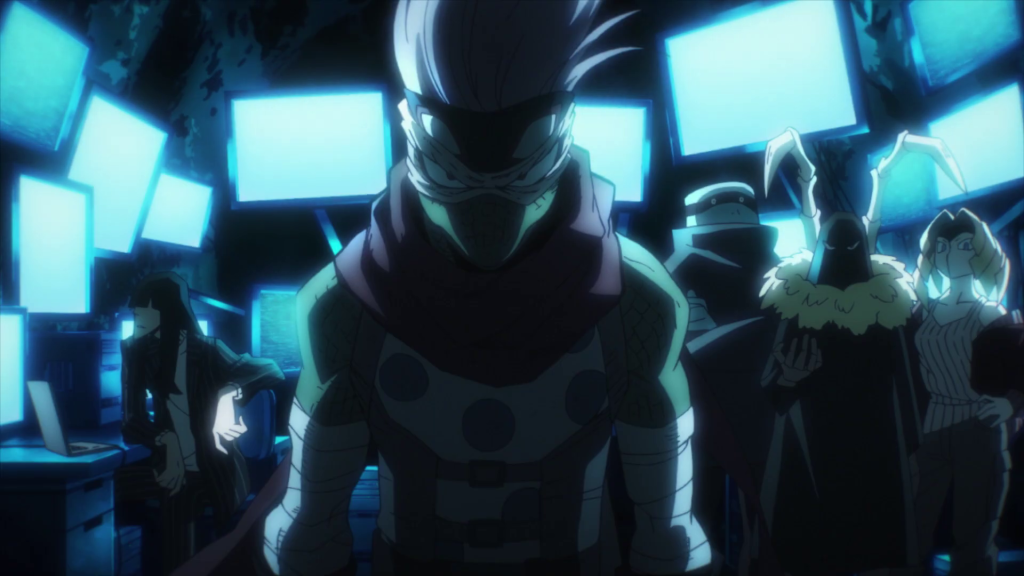
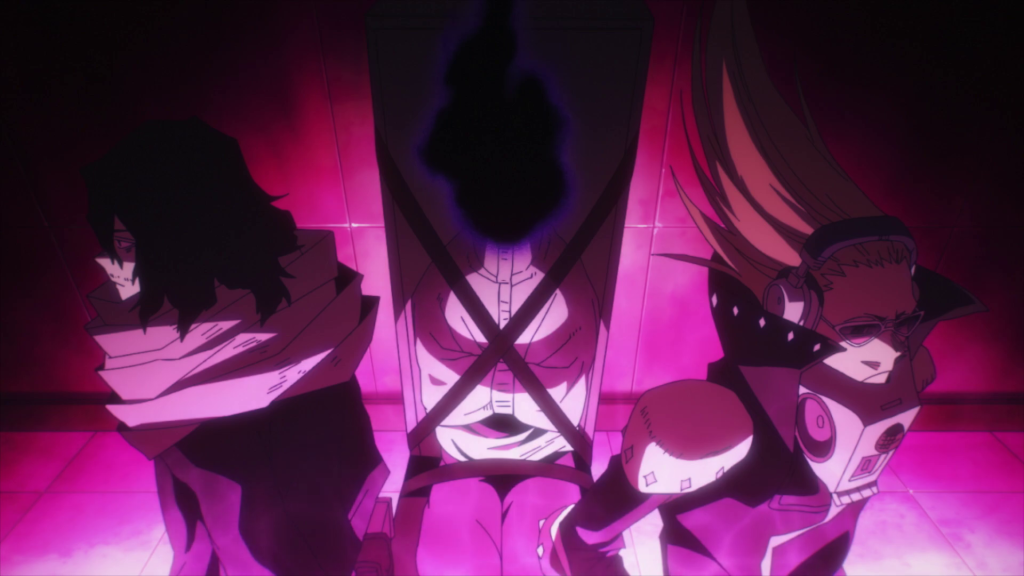
As the opening theme quiets down before the chorus, a set of cuts shows several characters in sequence, each making small, slow-motion gestures. The montage hints at two of the most personal conflicts of the arc: the final confrontation between Toga and Uraraka, and the climax of the ever-growing disaster that is the Todoroki family. Both cuts of the villains in particular deploy especially strong imagery: the cut of Toga standing inside her wrecked childhood home, as the once neutral colors give way to an eerie red lighting, blood running along the cracked windows, and the cut of Dabi lighting a small flame in his hand, revealing a distraught Toya from the shadows in its flickering. Simple movements like the ones in this sequence, – raising a head or hand slowly and deliberately – are difficult to animate well, and the execution is impressive. It requires great care and attention to detail in each drawing to maintain the subtlety of the movement and ensure the animation stays smooth, even if the in-between frames sometimes struggle to keep up.
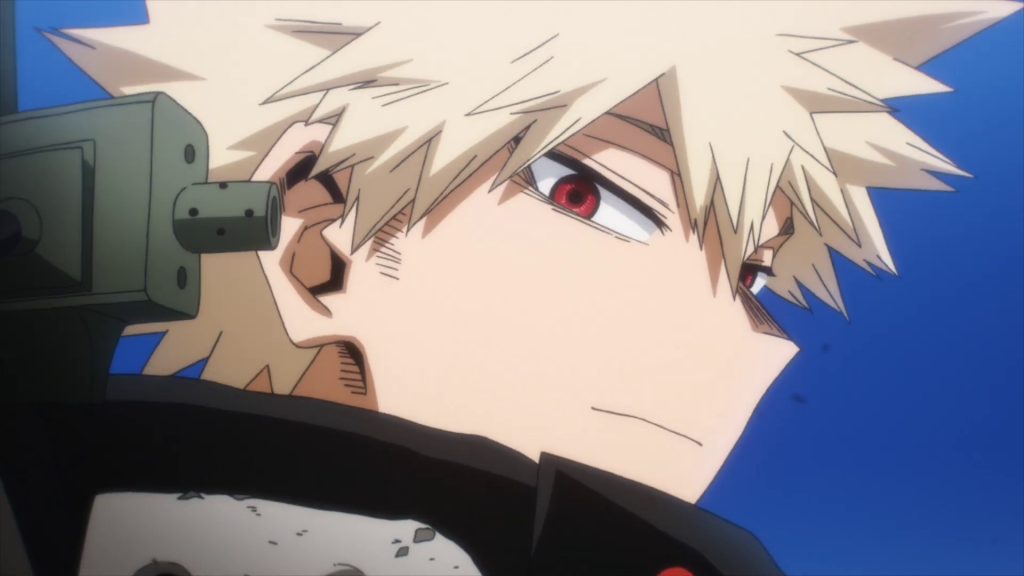
Only once the chorus of the song erupts forth do we finally get treated to some animation power instead of “every-other-element-of-the-visuals” power, and though one may lament yet another chorus segment of a Heroaca OP not showing any of the actual action setpieces that take place during the arc, there’s at least a real intent behind this one: showing every one of Deku’s friends in Class A pushing him onward to his inevitable final bout with Shigaraki. The sequence is handled by a relay of strong animators:
- We start with Jason Yao (who stated on his Twitter that his segment used 170 drawings within the span of 5 seconds), a staple of the series’s action animation since Season 5
- Takeshi Morita, a highly prolific animator with an on-again-off-again history on Heroaca
- Akira Iwamoto, a BONES-homegrown who only just started working as a key animator the year prior and is already putting out head-turning work
- Finishing the relay is Kenta Yokoya, a mecha animation specialist (who also happens to have originated from BONES!) making his first appearance on the TV series, having previously appeared on the second movie.
There’s certainly been bigger spectacles of animation in prior outings, but this one being in the hands of a group as reliable as these four means it still manages to hold up.
After the action dies down, Sasahara chooses to bookend the opening with Deku in the same ruins, this time with his friends at his side and clear skies above them, his hand reaching up toward the sky now closing into a triumphant fist. The transition to this outro from the chorus is rather abrupt in execution, but the intent is otherwise clear and undiminished.

It is, of course, hard to sing praises about this opening’s visuals without one final footnote as to the strength of the drawings throughout its entire duration thanks to the supervision of character designer Yoshihiko Umakoshi himself. While his appearance on an opening like this one is far from a novel occasion, it’s always a happy sight – all the happier since this is far from the only time we’re seeing him this season, considering we thankfully (and miraculously) now live in an era where he works regularly on the TV series again!
Ending 12
Storyboard/Direction: Haruka Iida
Animation Direction: Hitomi Odashima
Key Animation: Yoshiyuki Ito, Haruka Iida, Kanna Shirakawa, Ami Nagata, Maki Fukui, Sanae Yamamoto, Meguru Yamamoto, Shoka
by Seki
Continuing her streak of amazing endings from Heroaca S6, Haruka Iida once again helms the seventh season’s first ending. Iida has been a pillar of animation for the franchise for multiple seasons now, going from animating small scenes to being one of the main designated action animators of the series. She’s grown tremendously as an artist alongside the franchise, dedicating most of her career to it, so her having multiple directorial opportunities for the show is incredibly deserved.
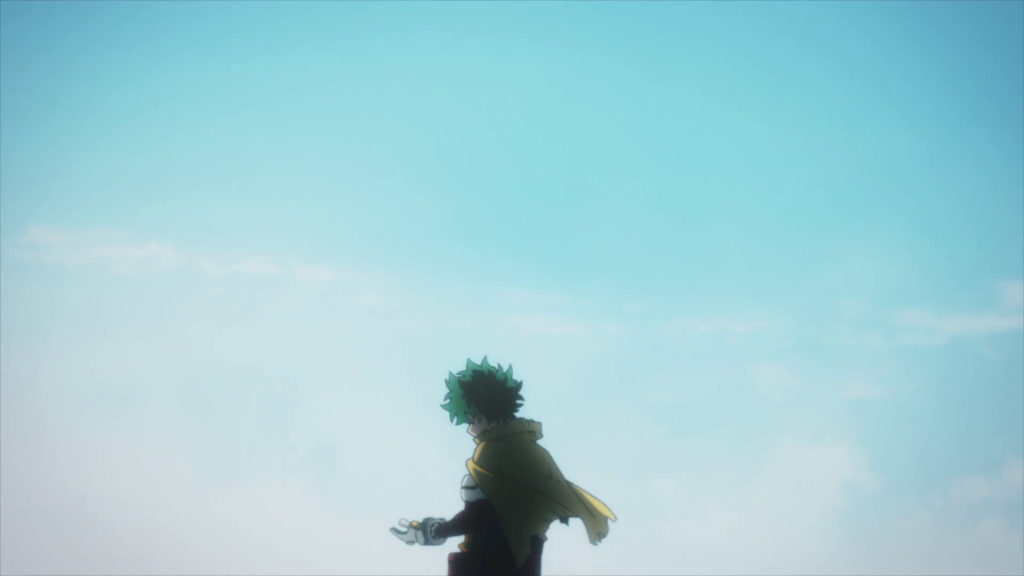
The ED follows a simple structure of showing snippets of characters’ backstories while referencing events that are set to happen this season. If it wasn’t clear already, Iida is a mega-fan of My Hero Academia, so she knows more than anyone the best scenes to place in the ED to cause emotional damage to manga readers. Even so, she presents them really tastefully, whether it’s characters looking back (literally so) at their younger selves, or if it’s cleverly hiding certain characters in a drawing, Iida definitely knows she’s playing with our emotions by displaying the events in this way. Additionally, the grainy compositing filter (thanks to Bones Photography Department) that she used in her other endings makes a return. It works just as well here, enhancing the nostalgic feel of the ED.
Iida’s storyboard shines especially through her use of quick cuts, where she often plays around with some city landscapes and then sprinkles in some character cuts in between. It’s a technique she’s used in both of the previous EDs, once again eliciting a feeling of nostalgia as the series enters its final arc. Iida ends it off with the blossoming of the flowers you see in the beginning of the ED, a visual motif that has been there since the literal first episode.
Moving on to the other participants in the ending, Yoshiyuki Ito was the top credited key animator. Ito is a BONES veteran who has been with the studio since its inception. He’s a fantastic artist and it’s not an overstatement to say the studio would not be what it is now without him. While it isn’t confirmed exactly what his contributions are to the ED, it’s known that he was responsible for most of the cuts that move. Iida is credited right after him, both of them likely animating large chunks of the ED by themselves. One more artist I’d like to point out in the key animator list is Shoka: a very young artist who is new to the anime industry – so new that this is actually their first ever anime credit! He had declared on his twitter about two years ago that he’d practice hard enough to be able to work on a BONES anime, which didn’t take very long. He’s another big fan of Heroaca; having more and more artists that have a passion for the series is always a positive.
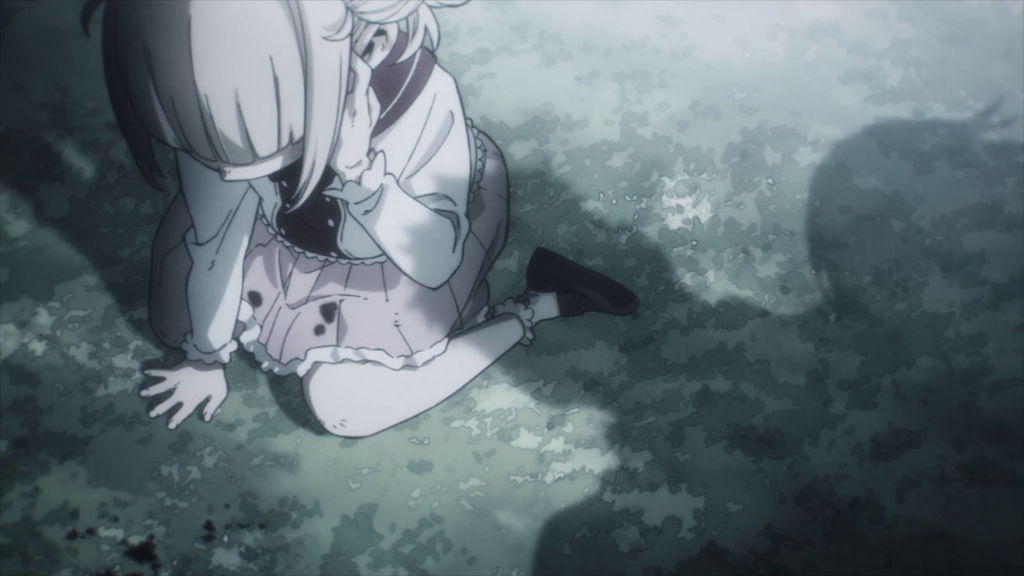
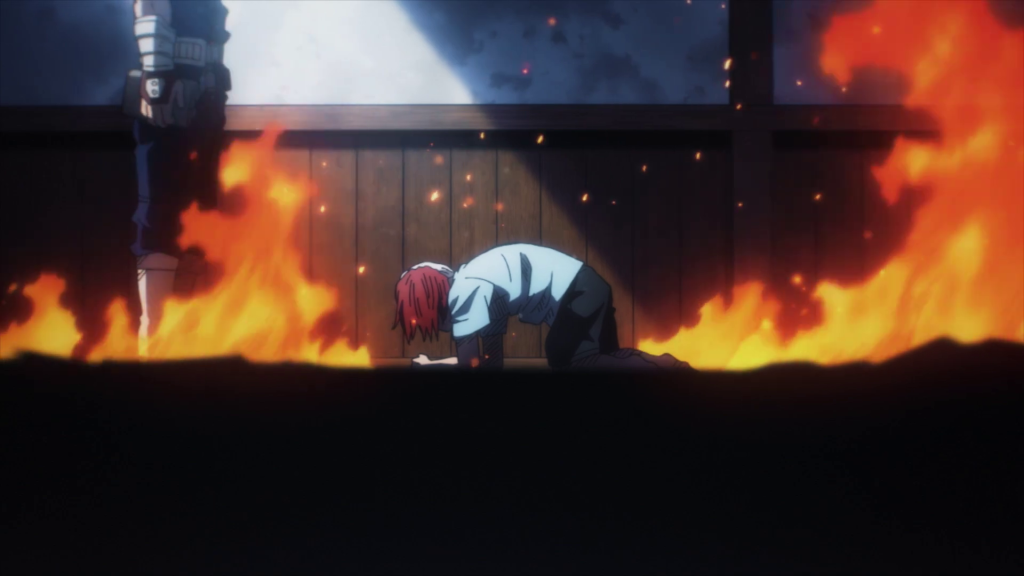
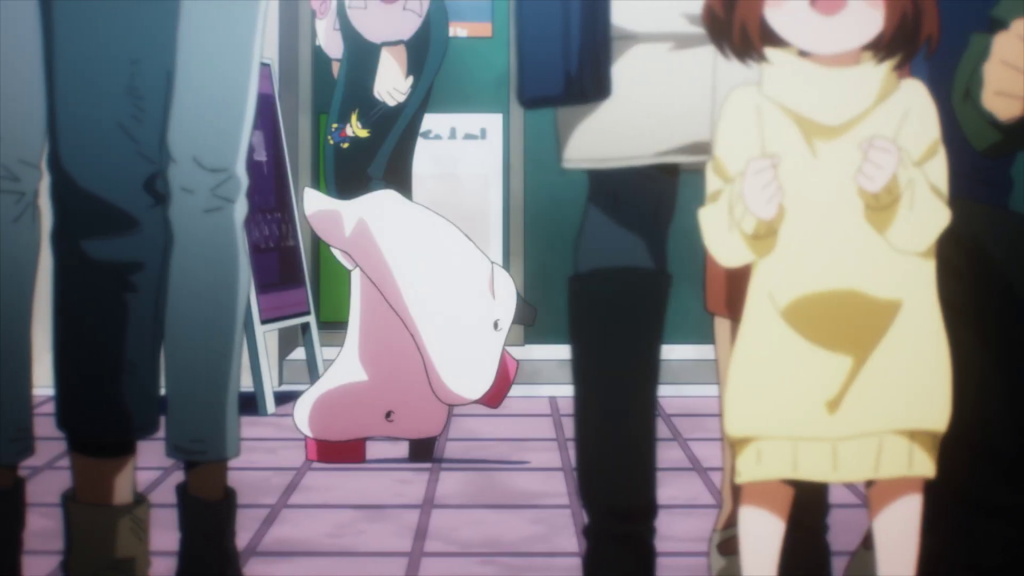
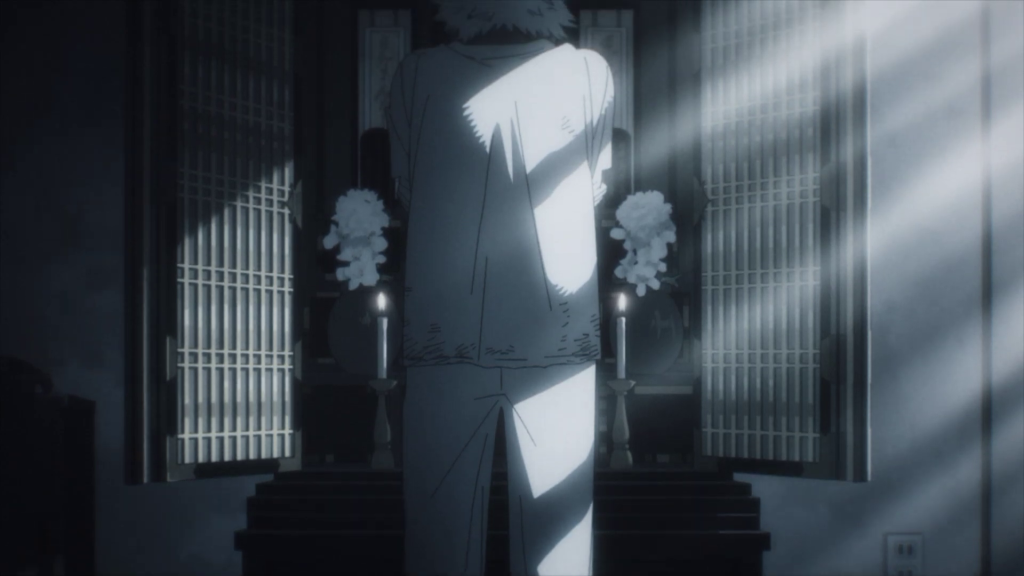
While Umakoshi was responsible for the animation direction of the OP, the show’s other character designer, Hitomi Odashima, has taken responsibility for the ending. Though it’s unclear what she actually corrected, there’s a good chance she didn’t have to do all that much. With Iida and Ito being the top Key Animators credited, there wasn’t a need to correct such strong artists. Add to the fact that she was probably busy with her position as chief animation director on the 4th Movie, and it’s easy to see why this simply didn’t really demand her attention.
Episode #139
Storyboard: Naomi Nakayama
Storyboard Cooperation: Takahiro Komori
Episode Direction: Ikuro Sato
Animation Direction: Yoshiyuki Kodaira, Takashi Murai
Animation Direction Cooperation: Yuka Shibata
Key Animation: Akira Iwamoto, Hikari Kukimoto, Tamako Horiuchi, Keiichiro Honjo, Akiko Otsuka, Yuuko Dangi, Yukiko Busa, Jason Yao, Shun Shibata, Yuko Shimoe, Yoshiyuki Kodaira, Takashi Murai, Yuka Shibata, Takahiro Komori, Kazuo Ohara, Takuro Naka, Yojiro Sakai, Haruka Kudo, Maki Fukui, Mikihiko Ando, Keiko Takano, Etsuko Miura, UB CHEN, Noriyasu Murata, Yukino Nakamata
It’s pretty common practice in anime productions for the series director to be really hands-on for the first episode, usually being solely responsible for the storyboard and sometimes even the episode direction. Newly appointed series director Naomi Nakayama was in charge of the former. However, since Heroaca is technically a long-running production, she couldn’t afford to be in charge of the latter. Directing an episode is a very meticulous and time consuming process: you’re responsible for every department getting their work done properly while maintaining the creative vision of the show, which is why this episode was fortunate enough to be in the hands of someone like Ikuro Sato.
If you’ve watched any BONES show, you’re nearly guaranteed to have seen quite a few episodes directed by Ikuro Sato. A veteran episode director at the studio from day one, he has a reputation as an extremely reliable person who always gets the series director’s vision across. He’s not the only BONES veteran on this episode however, because in a surprising turn of events, Takahiro Komori is credited for storyboard cooperation alongside Nakayama’s boards. This is Komori’s first storyboard credit since the Cowboy Bebop movie, more than two decades ago!! He’s usually focused on animation, supervision, and character design work in the studio, so who knows what prompted this. He’s a seasoned animator with more than 3 decades of experience, so he was likely responsible for tweaking the storyboard for some of the action scenes between Star & Stripe and Shigaraki.

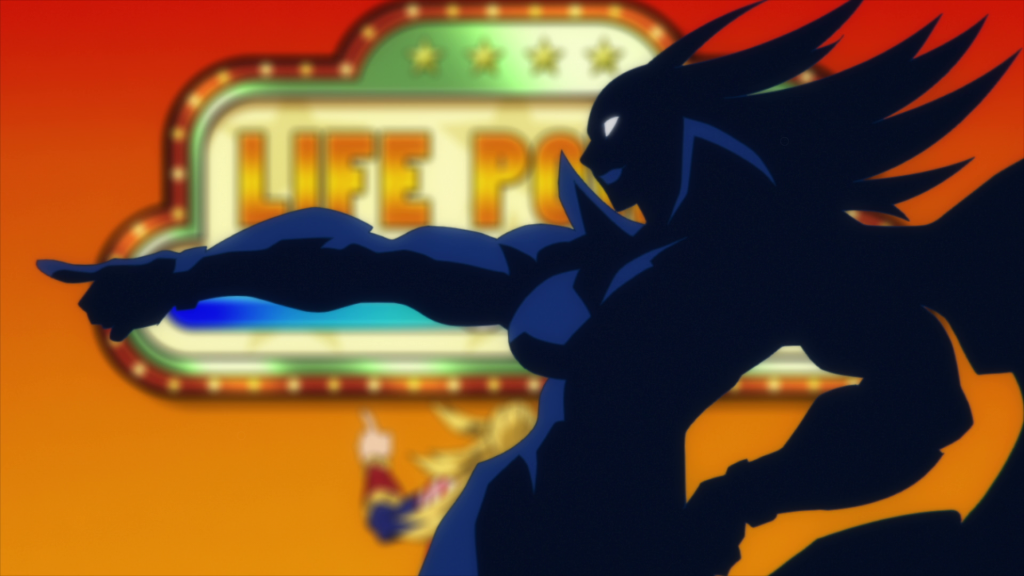
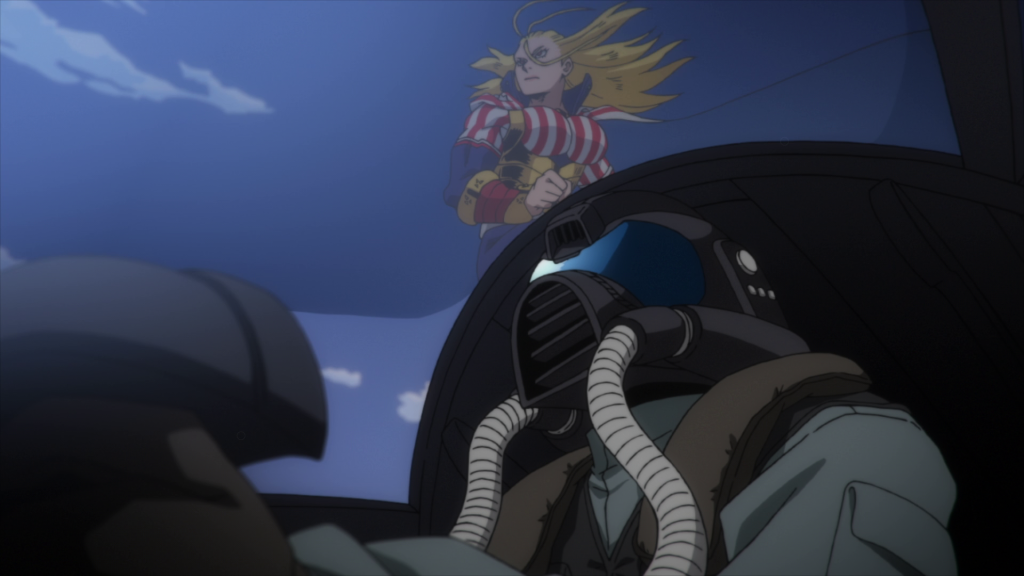
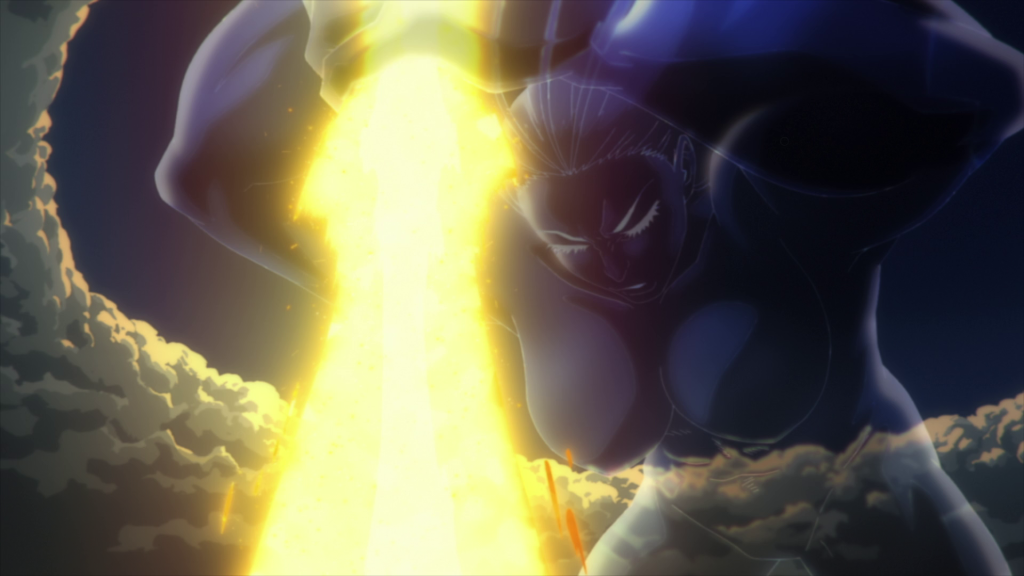
The episode is no animation spectacle by any means, but it still holds its own. Yojiro Sakai’s key animation kicks off the action in the B-Part, the absolutely ethereal Shigaraki shot being his work as well. While their work on this episode isn’t anything crazy, it’s worth mentioning Akiko Otsuka and Akira Iwamoto’s participation, mainly because I want to highlight the fact that they are absolute speed demons, which will be seen down the road. As the action starts to escalate, Heroaca regular Shun Shibata animates Star’s bigger form taking shape. The rotation really sells the scale of the form, showing you just how grand her power is. Komori makes another contribution to this episode animating Star uppercutting Shigaraki, with his trademark smoke making a quick appearance. He’s followed up by a sneaky appearance of Atsushi Mori, who went uncredited (likely due to contractual obligations on another production). The cut with the lasers homing in on Star was especially cool! Finally, Jason Yao animates the big attack of the episode. Shoutout to the compositing team on the first cut of his sequence: the line filter effect on Star was a really interesting detail.

Supervision of the premiere landed in the hands of Yoshiyuki Kodaira and Takashi Murai (with some assistance from Yuka Shibata). Kodaira and Murai are both long-time veterans of BONES, mainly C Studio. As a result, a lot of the productions they had been on before Heroaca weren’t as cartoony compared to the show. Most of BONES’ show’s in the past had very sharp and sleek designs, which had a few artists on Heroaca struggling at times with Umakoshi’s more cartoonish designs. Star & Stripe however, is different. Her design is quite the departure from the regular My Hero Academia design, giving Murai and Kodaira the opportunity to flex their drawing muscles in a different way this episode, by which I mean making her look like a badass in every shot.
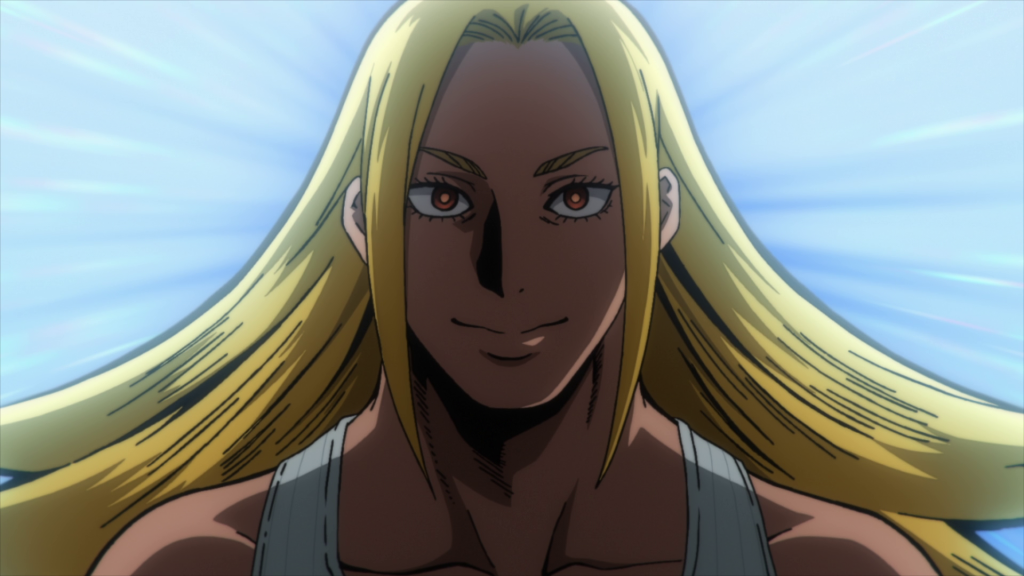
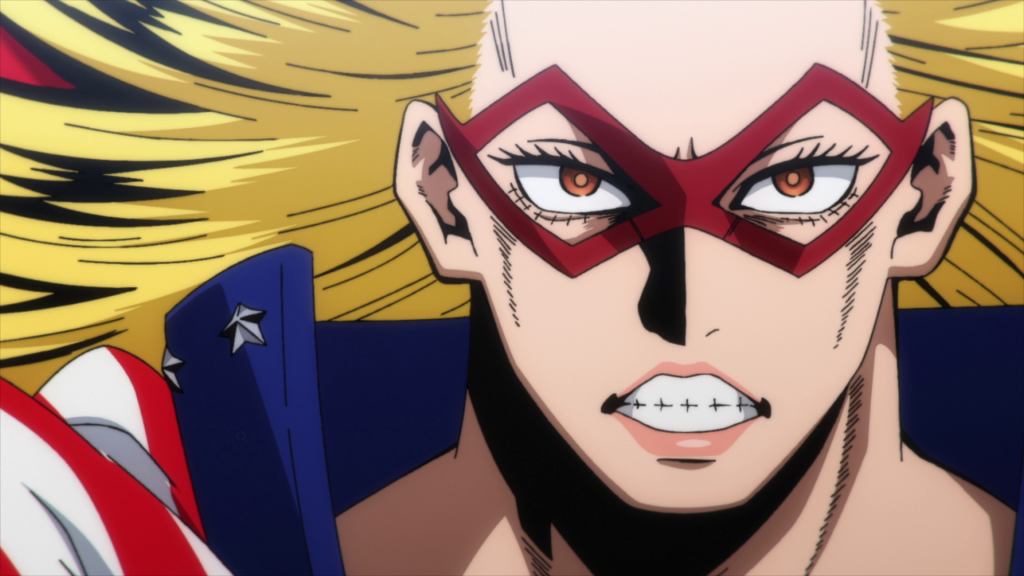
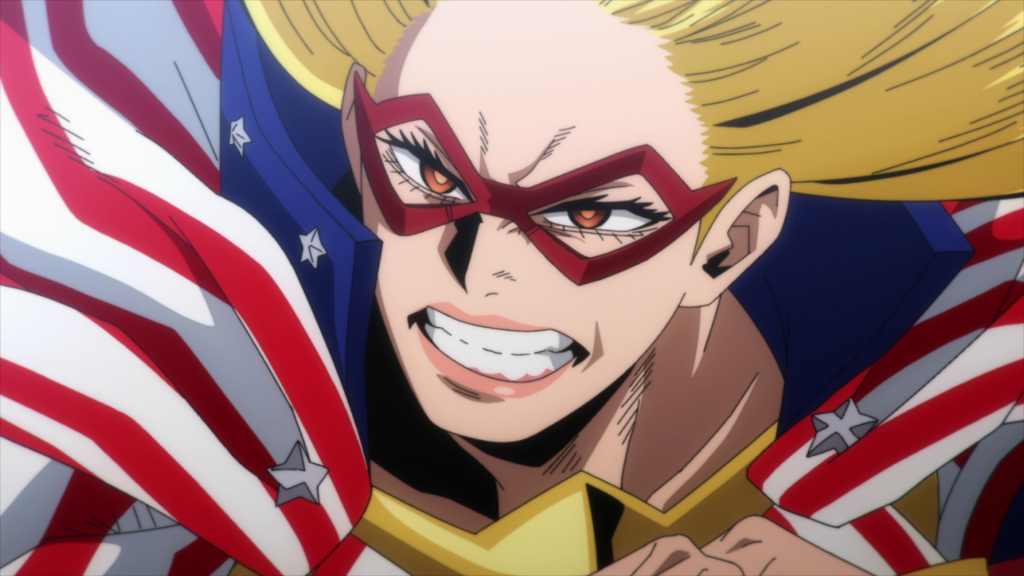
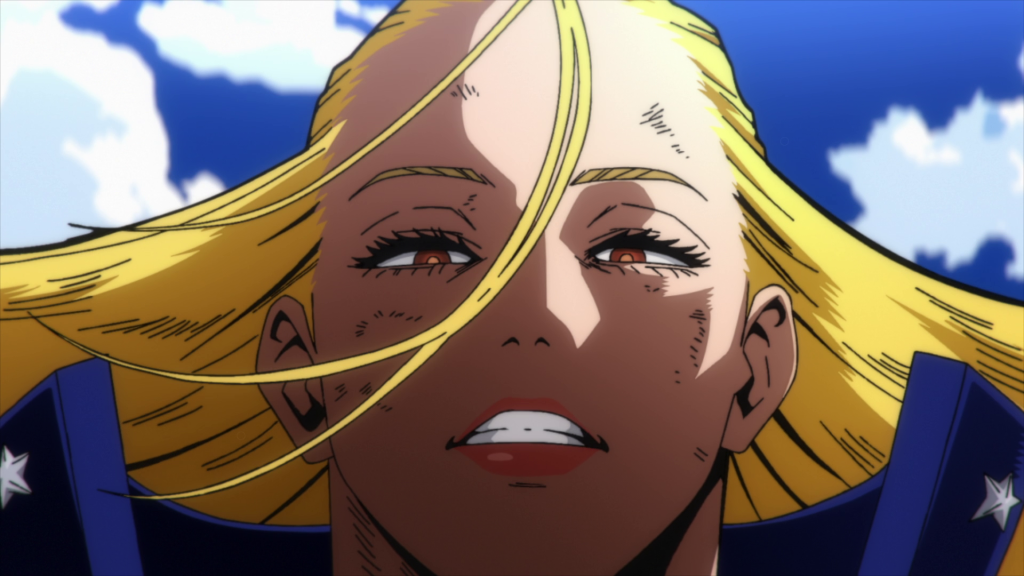
Overall: a solid premiere with some cool animation highlights. Kicking off what will be the most action packed season with Nakayama showing off her skills as a series director for the franchise, it gives us a little taste of what is to come later on.
